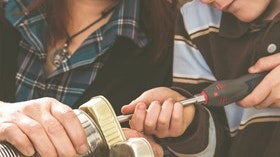Homepage
•
Learning Library
•
Blog
•
4 maker activities to keep students tinkering
Expand breadcrumbs
Expand breadcrumbs
- Learning Library
- Blog
- 4 maker activities to keep students tinkering
- Homepage
- •
- Learning Library
- •
- Blog
- •
- 4 maker activities to keep students tinkering
4 maker activities to keep students tinkering
By Nicole Krueger
April 10, 2019








